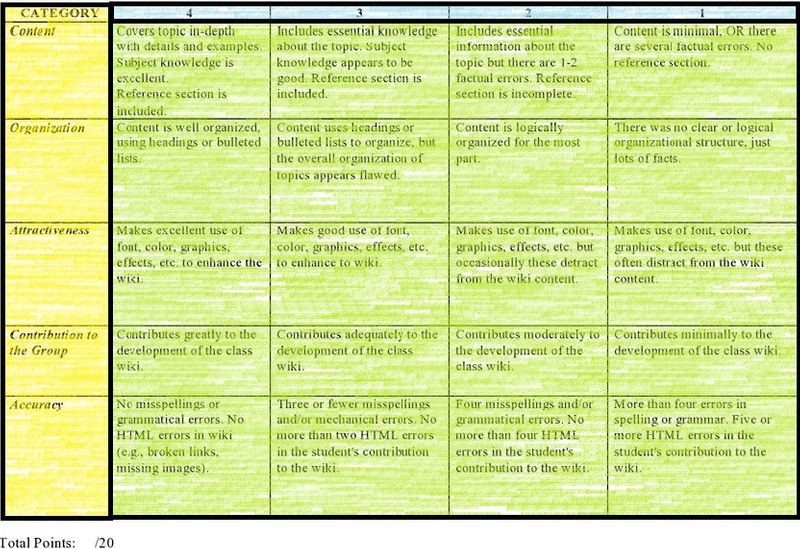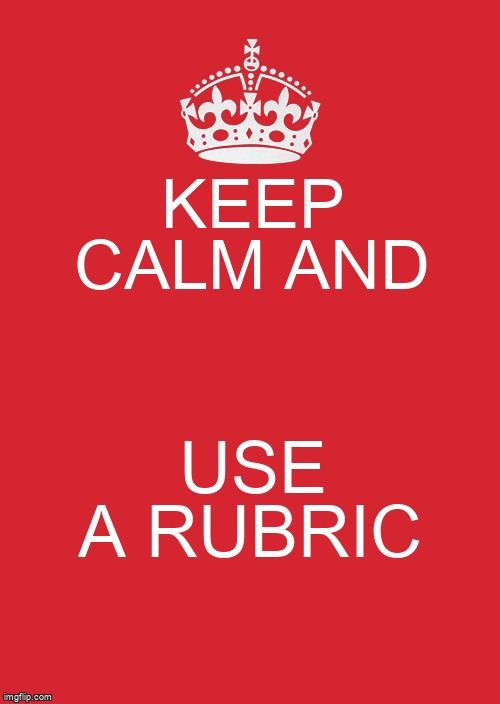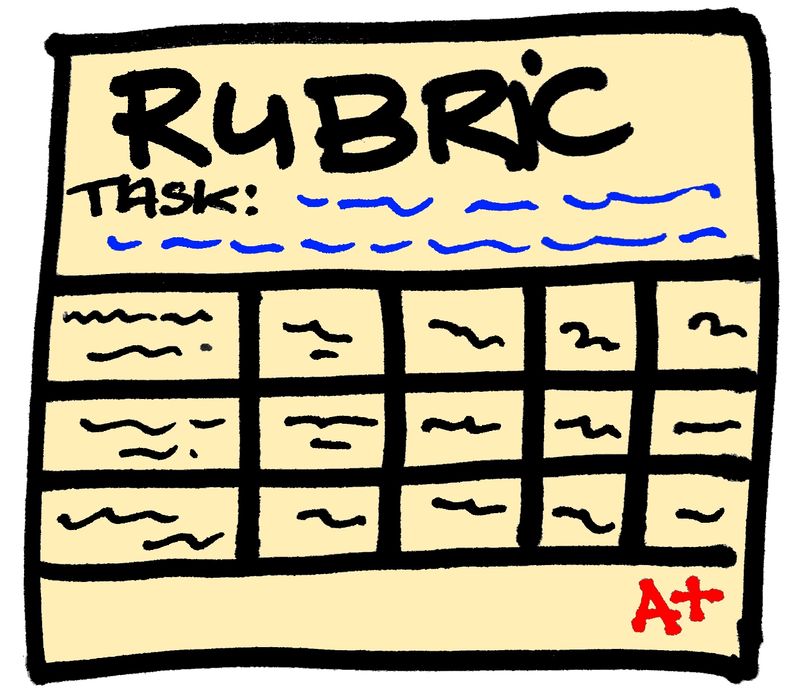Did you ever get a bad score on an assignment, project, or essay and you didn't know why?
Did you look at the rubric for the assignment? No?
Understanding rubrics can help you get better marks 👇

What's A Rubric?
Put simply, it's a scoring guide that teachers use to evaluate how well you met the objectives of a project or task.
In other words, did you learn what you were supposed to learn?
Rubrics take many shapes, but they often take the form of a matrix, like this one for a writing assignment:

Column 1 (Yellow): items (criteria or objectives) that need to be graded and sometimes the value of the grade (or "weighting").
Row 1 (Blue): scores from low to high (or high to low).
Cells (Green): describe the criteria for giving scores for what has (or has not) been done.
Quiz: Getting The Best Mark
Let's take a closer look at the example rubric above:
 Looking at the rubric, you know that to get the top mark of 4, you must:
Looking at the rubric, you know that to get the top mark of 4, you must:
go in-depth
give details
give examples
show your subject knowledge
include a reference section
Quiz
What's the top score you would get for "content" if you forgot to add a reference section?
Why Do Teachers Use Them?
Good teachers use rubrics for a number of reasons...
🔎 Help make goals clear
📈 Help students improve
🏁 Make scoring easier and faster
💞 Make scoring fairer for all students
🔊 Make it easier to give feedback
🤕 Reduce grade disputes

Ok, Teachers Use Rubrics But Why Do I Need Them?
Doing an assignment without a rubric is a bit like trying to kick a goal blindfolded.
A good rubric will:
👀 tell you what the teacher is looking for while scoring your work
💯 tell you what you need to do to get the top marks
✅ help you make sure you didn't forget anything
❓ show you why you scored the way you did
⭐ help you know how you can do better next time

👉👉 Getting into the habit of using a rubric will improve your work and therefore your scores! 👈👈
Take Action

Next time you get an assignment, essay, or project:
Your feedback matters to us.
This Byte helped me better understand the topic.
